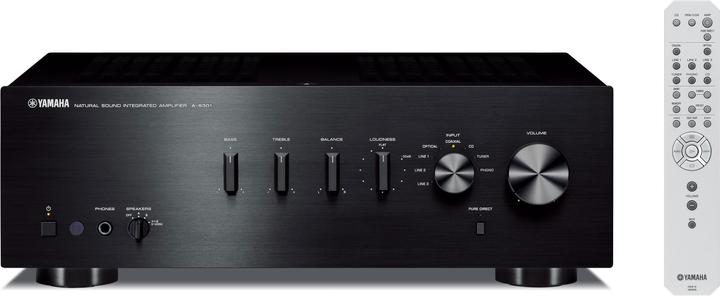
Yamaha A-S301
Amplifier

Yamaha A-S301
Amplifier
What alternative is there to the; YBA-11 Bluetooh Wireless Adapter to set up a Bluetooth connection?
Unfortunately no answer because I returned the amplifier, 16.08 2018.

8 months ago
Yes, you can control the volume of speaker terminals A and B of the Yamaha A-S301 separately. The amplifier has a selector switch with which you can control the output signal for the two pairs of speakers (A and B) independently of each other.
Automatically generated from the .The DBR-15 are active stage loudspeakers. 450W RMS, 1000W peak. VOR amplifiers with ideally XLR signal output are suitable for control. On stage, this is often a mixing console. - Due to the active amplifiers, these powerful speakers have 4 fans for cooling. In very quiet environments, depending on the location of the speakers and the power required, these can also become audible in quiet passages or pauses. Especially if the speakers are set up in rather dusty places, as dust and cigarette smoke will cover the fan blades after a while. It may be helpful to consult a specialist for professional audio.
An equalizer, I don't know if that's necessary, but maybe it would be better to take a home cinema amplifier, they are also very good for HiFi and have a measuring computer, where you could then adjust the speakers with the built-in equalizer. You can certainly connect an external equaliser to any amplifier, but then you have to connect the speakers in the same way so that they get the adjusted sound. With this AV receiver, you will certainly get an excellent sound in stereo mode, and a DAB+ radio is also built in: Onkyo TX-SR494DAB (7.2 channel, DAB+)
This is possible without any problems; RCA (Cinch) inputs are available. For optimal quality, it is also recommended to connect a PC via digital (optical or coaxial) input. With the DAP version, the signal goes a long way: Source -> headphone amplifier DAP -> cable -> line input -> amplifier A-S301 -> cable -> loudspeaker Digital: Source -> Amplifier A-S301 -> Cable -> Loudspeaker
I use the same amplifier with two "Klipsch R-24F" speakers which have a very good sound (imho). But I don't use a record player but the optical input of the amplifier with my PC.
As a rule, you can connect the TV to the amplifier with an HDMI cable. Your TV and amplifier may also have an optical cable. Value Toslink cable (2m, Entry, Black) The advantage is that you can connect decent speakers (maybe even a 5.1 system) to the amplifier. Then you have perfect sound enjoyment with films.
9 of 9 questions